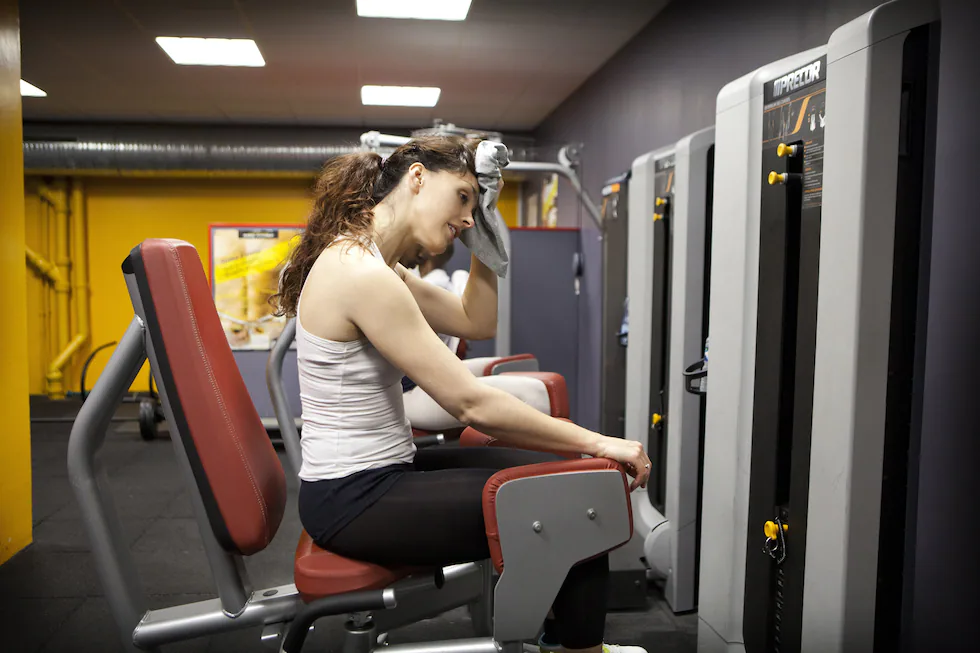
“It’s not for me”: reasons for not wanting to exercise
The price, the schedules, the fear of doing it alone and not having access to facilities or equipment are some of the reasons for not training
For a part of the population, exercising is not always enjoyable or fun. It is common to hear famous people and celebrities suffer during their physical exercise sessions when they are preparing for their daily routines: “I don’t like this”, “it’s not for me”, “I get tired just thinking about it”… However, they do it for the benefits it brings to their health (physical and mental) and to their professional activity. It is true that the fitness industry has tried to impose its slogans such as “ no pain no gain, make it burn ” considering a very limited physical spectrum of participants, a fact that has led to exercise seeming like a tortuous obligation in adulthood.
In today’s society, stereotypes about health and body care are in contrast with daily activity and work and family schedules that often determine the time available for exercise. In this context, there are people who are deniers of the benefits of physical exercise, those who simply refuse to do it, those who exaggerate those who promote it or those who only see drawbacks to everything that sounds like physical exercise. The reasons are varied, even going so far as to consider possible adverse (unhealthy) effects in physical exercise or convincing themselves that its practice is not a magic pill that will make them immortal. Daniel Lieberman in his book Exercise explains the biological basis of the human being that “has never evolved to exercise”, since it is a voluntary activity for health, but that in today’s society it can be considered “a privilege for the privileged”. However, Lieberman justifies that we must coldly move for the sake of our health, and we have to do the necessary exercise appropriate to our age and that is fun for us.
International institutions promote an active lifestyle. The WHO wants the population to be healthy by avoiding the causes that can lead to illness. Therefore, its proposals are always in favour of people, and not against them, although sometimes they may seem like impositions. So physical exercise should be integrated into work time and daily routines, just as it is about eating healthy, resting and sleeping enough, or having daily hygiene routines. Although we cannot forget that exercising is a personal decision, useful time can be used for other activities with family and friends, instead of exercising, you can be happier even if you are less healthy.
People who exercise or have been active exercisers are more in favour of changing their health habits again , while among sedentary people there are two types of male adults (those with little awareness or indifference towards physical exercise and people who are clear about what is good for them and exercise is not a priority) and three types of female adults: those with little awareness who consider that it requires a lot of effort, those who are opposed to it due to the risks derived from exercise and those who are receptive to considering a change in their lifestyle.
In middle-aged people, the reasons for not exercising are associated with their physical self-concept, cost-benefit and negative emotions associated with exercise . And there are two key factors for exercising: a worsening of their perception of health and that the exercise is adjusted and appropriate for the person. For adult women, it can be considered difficult to do due to family obligations and the belief that they are selfish if they dedicate time to exercise when there are other tasks that would be pending within the home. Likewise, there are perceptions or biases that make women think that some activities are not suitable for them due to the possible negative results on their body image. Therefore, although the positive benefits of practicing physical activity and exercise are clear, for some people who do it for reasons of physical appearance such as weight control, they can lead to a worse perception of their body and reject exercise.
Internal reasons vary : “I’m too lazy to start”, “I’m not the typical athlete” or “I haven’t felt the energy”. These are related to the fact that it is easier to follow their perceptions than to propose changes to exercise, since they consider that this intrinsic motivation will never come to them. Although we must not forget that there are factors such as price, schedules, fear of exercising alone, not having access to facilities or equipment, not having close communication with trainers and exercise partners, or not being fun, which reduce the chances of adhering to physical exercise .
In adolescence, the reasons for not exercising are also related to weight control and body image. In boys, it is seen as a way to improve their health and image, but in the case of girls, it can lead to a certain discontent with the ideal profiles of the perfect body, with exercise often being a medical prescription, which reduces their motivation for it.
From scientific studies, one of the explanatory models is the transtheoretical one by Prochaska and DiClemente , which establishes that there are several phases to establish a change, the pre-contemplative phase (there is no intention to change their behavior in their desired future), the contemplative phase (they are aware of a problem in their behavior and consider the need to change, but they do not have enough commitment to do so), the preparation (it is about taking initiatives and actions in the near future), the action leads to the modification of their behavior and the maintenance consolidates the beneficial practices. The studies on the practice or not of physical exercise indicate that in the pre-contemplative phase the disadvantages are defended over the advantages of physical exercise, which leads to not changing their routines. While regular exercise practitioners in the maintenance phase only indicate as a disadvantage the possible injuries they may have in their practice, the benefits they bring being greater.
Sometimes external reinforcements work , such as the health benefits of exercising. However, sometimes they have a short-term effect and do not reinforce people’s intrinsic motivation, but rather decrease it. In this context, the effects of change in physical practice have been associated to a greater extent with creating habits of exercising with friends, increasing their physical activity habits and improving self-confidence, better valuing the cost-benefit of exercise.
We cannot stop promoting physical activity and exercise for the entire population, and therefore institutions must promote exercise programs adapted to physical, social and family characteristics so that the pros of exercise outweigh the cons, and behavioral changes regarding its practice can be initiated. Offering proposals that respond to psychological, time management and health needs, contributing to improved self-esteem, self-perception, enjoyment and health promotion. Remember: some movement is better than none.
ENFÓRMATE is the space in EL PAÍS SALUD where we will talk about those aspects related to physical activity, sport and physical and mental health. Physical activity and sport are part of the culture of all civilizations and play a fundamental role in the health of society at all levels, both physically and mentally, at all ages, from childhood to old age, in both men and women. From the Sciences of Physical Activity and Sport, we have tried to advance scientific knowledge about the importance of movement and physical exercise on the body, as well as the processes that explain why certain adaptations, modifications or changes occur at different levels (physiological, anatomical, motor, emotional or cognitive). For all these reasons, this space seeks to find scientific explanations that support and justify the very beneficial reasons for physical activity and sport. Likewise, we will try to discuss and refute certain myths or false beliefs existing in society on specific issues of physical exercise and health.






